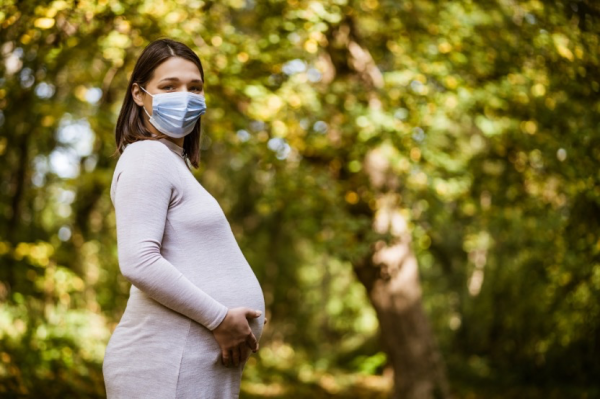Pregnant women show unique immune response to COVID-19
April 17, 2023
Source: drugdu
 334
334

Infection with the severe acute respiratory syndrome coronavirus-2 (SARS-CoV-2), which is the causal agent of the ongoing coronavirus disease 2019 (COVID-19) pandemic, has claimed more than 6.8 million lives worldwide. It remains imperative to understand the immune responses to SARS-CoV-2, particularly in high-risk groups, to formulate better vaccination and treatment strategies.
The immune response to COVID-19 during pregnancy
Immunological assessment related to COVID-19 has been performed largely in healthy individuals across varied age groups. After contracting SARS-CoV-2 infection, patients typically develop robust and transient immune responses that include an abundance of SARS-CoV-2-specific antibodies, T-cells, B-cells, and long-lasting immune memory.
Severe SARS-CoV-2 infection has been characterized by the presence of blood hypercytokinemia and hyperactivation of innate/adaptive immune responses. Limited studies have been performed on the immune response after SARS-CoV-2 infection in pregnant women. Pregnant women are considered to be highly susceptible to COVID-19 due to immunological and physiological changes that occur during pregnancy.
Previous studies have indicated that SARS-CoV-2 infection during pregnancy increases the risks of hospitalization, invasive ventilation, intensive care unit (ICU) admission, sepsis, shock, acute renal failure, extracorporeal membrane oxygenation (ECMO), death, and thromboembolic disease as compared to non-pregnant individuals.
In addition, as compared to a healthy pregnancy, those with COVID-19 have been found to be at a higher risk of preterm birth, preeclampsia, and gestational hypertension. Several studies have also reported that some pregnant women develop mild COVID-19 symptoms or remain asymptomatic.
Previous ribonucleic acid (RNA) sequencing studies have identified differences in the abundance of natural killer (NK), natural killer T (NKT), and mucosal-associated invariant T (MAIT) cells between COVID-19 convalescent pregnant and nonpregnant women. Pregnant women who remained asymptomatic or developed mild COVID-19 symptoms have been reported to exhibit higher levels of low-density neutrophils, which has been frequently observed in severely infected COVID-19 patients.
There remains a lack of a comprehensive analysis of antibody, cytokine, and immune cell activation phenotypes during the early and late stages of COVID-19 during pregnancy.
About the study
A recent JCI Insight study analyses the adaptive, innate, and humoral immune responses to SARS-CoV-2 using samples from 119 women.
Blood samples were collected from 23 pregnant women with polymerase chain reaction (PCR)-confirmed COVID-19, 12 of whom developed an acute infection and 14 recovered from infection. Similarly, blood samples of 33 non-pregnant women with COVID-19 were collected, 12 of whom were acutely infected and 14 were convalescent. For the control group, blood samples from 21 healthy pregnant and 42 non-pregnant women who did not have a history of COVID-19 were obtained.
This study qualified 217 immunological parameters and analyzed blood samples from one to 258 days after disease onset. This long-term analysis provides a comprehensive map of immune responses during acute and convalescent phases of SARS-CoV-2 infection in pregnant women.
Study findings
Comparable antibody characteristics were observed between pregnant and non-pregnant women with COVID-19. Additionally, SARS-CoV-2 receptor binding domain (RBD) and N-specific immunoglobulin G (IgG) antibodies were detected in the cord blood of convalescent pregnancies.
Consistent with previous studies, the presence of SARS-CoV-2-specific antibodies in pregnant women was observed post-infection.
Cellular immunity in pregnant and nonpregnant women with SARS-CoV-2 infection was also compared, which demonstrated typical activation patterns of classical αβ CD4+ and CD8+ T-cells. NK and γδ T-cell activation was similar during acute infection, which indicates that both groups induce similar innate responses after SARS-CoV-2 infection.
Women undergoing a healthy pregnancy have a higher abundance of activated NK and γδ T-cells, which could have prevented the development of acute SARS-CoV-2 infection. Lower levels of circulating MAIT cells were also found in healthy pregnant women, which remained consistent, even during the acute infection phase.
In the second and third trimesters of a healthy pregnancy, higher frequencies of a CD56+ γδ T-cell subset were observed as compared with nonpregnant women. Higher levels of human leukocyte antigen (HLA)-DR-expressing γδ T-cells were observed, thus indicating the role of activated γδ T-cells during a normal pregnancy.
An increased frequency of interleukin 8 (IL-8), IL-10, and IL-18 were observed in healthy pregnant women, which remained elevated during SARS-CoV-2 infection. Pregnant and non-pregnant women with SARS-CoV-2 infection shared similar chemokine and cytokine profiles, except GRO-a and eotaxin.
Consistent with previous studies, the current study revealed a Th2 cytokine response in pregnant women, with a few differences in its level between pregnant and non-pregnant women with acute COVID-19. Immune cell analysis of the placenta of women with a healthy pregnancy and those with COVID-19 revealed comparable levels of NK and T-cell activation.
Conclusions
Similar levels of antibody production and adaptive cellular responses were observed between unvaccinated pregnant and non-pregnant women with acute or convalescent SARS-CoV-2 infection. Nevertheless, the NK and γδ T-cell activation, as well as inflammation, were altered during pregnancy.
Taken together, the findings of this study provide important insights into the immune responses during pregnancy, which can help formulate better treatment strategies for pregnant women with COVID-19.
Reference:
By editorRead more on
- Multiple batches of quadrivalent influenza virus split vaccine have been sub-packaged and submitted for lot release approval; expected to be released to the market soon after approval December 12, 2025
- Ab&B Bio-Tech CO., LTD. JS Lyophilized Human Rabies Vaccine Initiates Phase III Clinical Trials December 12, 2025
- The ‘Sweetest’ HPV Vaccine Market is Gone | Haibin Interview December 12, 2025
- InnoCare Pharma announced that its first independently developed next-generation TRK inhibitor, zoletrazinib, has been approved for marketing in China December 12, 2025
- Is PD-1/VEGF dual antibody + ADC becoming the standard configuration? December 12, 2025
your submission has already been received.
OK
Subscribe
Please enter a valid Email address!
Submit
The most relevant industry news & insight will be sent to you every two weeks.



